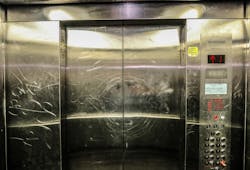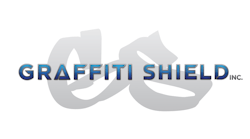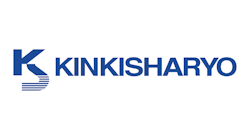Today's mass transit is growing at astonishing rates in many cities around the globe. Every day we read about a new plan for transit in a city or a completion of one that helps the infrastructure of that city grow and prosper. As these new systems and existing systems grow, it is really important to look at how to properly budget for the unforeseen challenges that occur to transit facilities and rolling stock.
A new trend that is happening is aggressive vandalism on the hard surfaces of facilities and rolling stock. In the past it was always known that a station or rolling stock vehicle would be vandalized by traditional graffiti, like spray paint, markers or slap tags, and while these types of vandalism are still occurring, they are removable with chemicals and some elbow grease. This new trend of aggressive vandalism is a type of graffiti that is permanent. The practice includes the use of a sharp object like keys, carbide drill bit, knife and even sandpaper. Damage is done by these instruments and carving into the surface, leaving the surface etched and permanent damage is visible for all to see. Some are even using forms of acid and mixing it with a colored shoe polish to make their etching stand out after it dries. This trend is getting more and more costly as the vandalism is done on glass, metal surfaces, mirrors, stone and rolling stock interiors.
With the growing trend, agencies are forced to deal with this damage by either replacing or fixing the surface that gets vandalized. An example is the brand new Los Angeles County Metropolitan Transportation Authority (Metro) Gold Line Kinkisharyo cars that were recently put in service in Los Angeles. Immediately after their launch, the window sills, seats, walls, windows and doors were being engraved. As an example for the magnitude of the cost of damage, let’s look at just the window sills. The only fix for this damage was to remove the entire side panel, sand, primer, repaint, then install the panel back into the train. That's 40 union labor hours, plus material. This doesn’t include the lost revenue of the train while it sat idle being repaired. This is just one area of the train that gets vandalized and one train of hundreds in the fleet.
Elevators are a prime target, too, since the majority of them are a mix of glass and stainless steel. Elevators are enclosed spaces that allow a vandal do their damage with privacy and plenty of time while the elevator goes from an underground platform to a mezzanine or street level. They vandalize the doors, side panels or cab fronts directly by carving into the metal surface. If the cab has glass, then that surface is vandalized leaving a very uninviting space. Many patrons will see this as offending and believe that the agency doesn’t keep up the maintenance on its equipment.
Other areas vandalized are escalator and stair sides on platforms and mezzanines, which are mostly made of stainless steel cladding. While this surface gives the appearance of a clean environment and looks very nice, the vandals see this as a giant canvas to put their moniker on. The common vandalism is using a sharp object to engrave their moniker or using the acid method previously mentioned. These areas are normally the first area a patron sees when getting off a train.
All this vandalism can be fixed by spending many hours resurfacing the area by grinding the glass then polishing, or re-graining the stainless steel and hoping to get the surface to match. On average, it takes about 60 minutes to resurface one square foot of damage. To perform the repair, you would need to close down needed elevators for several hours depending on the amount of damage done due to airborne metal and glass particles produced by resurfacing. If the escalator and stair side are on a train platform with patrons and moving trains, then repair is almost impossible due to the flying particles unless it is done during non-revenue hours. In some cases, many agencies are a 24/7 system, and then you would have to coordinate the station to be closed or partially blocked off for repair.
The most unfortunate case is when a new vandalism event occurs on that newly repaired surface. While this is not something factored, it is a normal occurrence that starts the whole cycle over again. The best advice in any vandalism situation is to take care of it sooner than later. The "broken window theory" is clearly the same in this situation: If one window is broken on a building, then it is considered acceptable to break more and before you know it, all of the windows are broken.
Most agencies and patrons believe that the majority of the tags are from gang activity. While this may be true on traditional graffiti due to the high visibility a painted tag gives, the fact is, many of the tags are being done by boys and girls of different ages with no gang affiliations and come from all walks of life. It is believed that the peer pressure from other kids, friends, or for the sheer fact the “rush” they feel by doing something wrong and the mark that is left for bragging rights.
Most agencies have some sort of budget for traditional vandalism, but not aggressive. Agencies of today must start budgeting for dealing with aggressive vandalism before it grows out of hand and is too late. Once a train, bus, or station gets badly damaged, it becomes very expensive to fix or repair due to the magnitude and overall spread of vandalism from not staying ahead of it.
There are many new solutions to these growing problems that can be a major cost saver than repair. There are many coatings available to resist traditional vandalism and make it easy to remove paint, markers, and the like. There are also spray on coatings that can be applied to a vandalized area, but most give you a repaired look and are not removable in most cases. The newest solution is removable surface protection films. These films can be clear for glass, in a stainless steel, mirror and custom color finish to match the surface they are covering. The premise is to hide the damage or protect a known area from damage before they occur. Once the surface has been vandalized or worn, you simply remove the film and replace. The films can be installed by agency staff or by outside contractors. Most of the materials are installed in a pre-cut fashion to allow a very discreet look offering a virtually invisible layer of protection. These types of protection systems are growing in popularity due to the cost savings and time savings advantages they offer.





